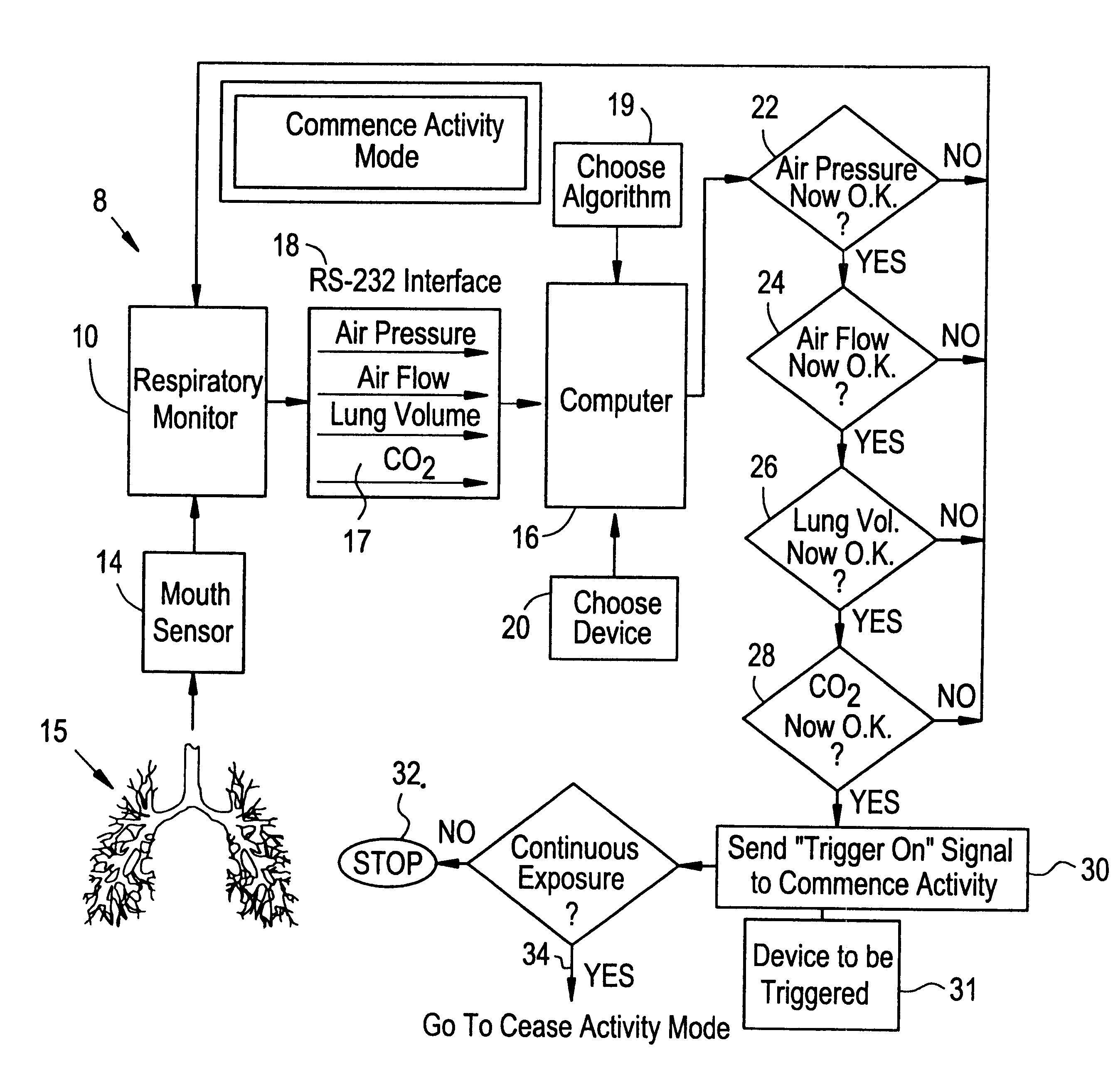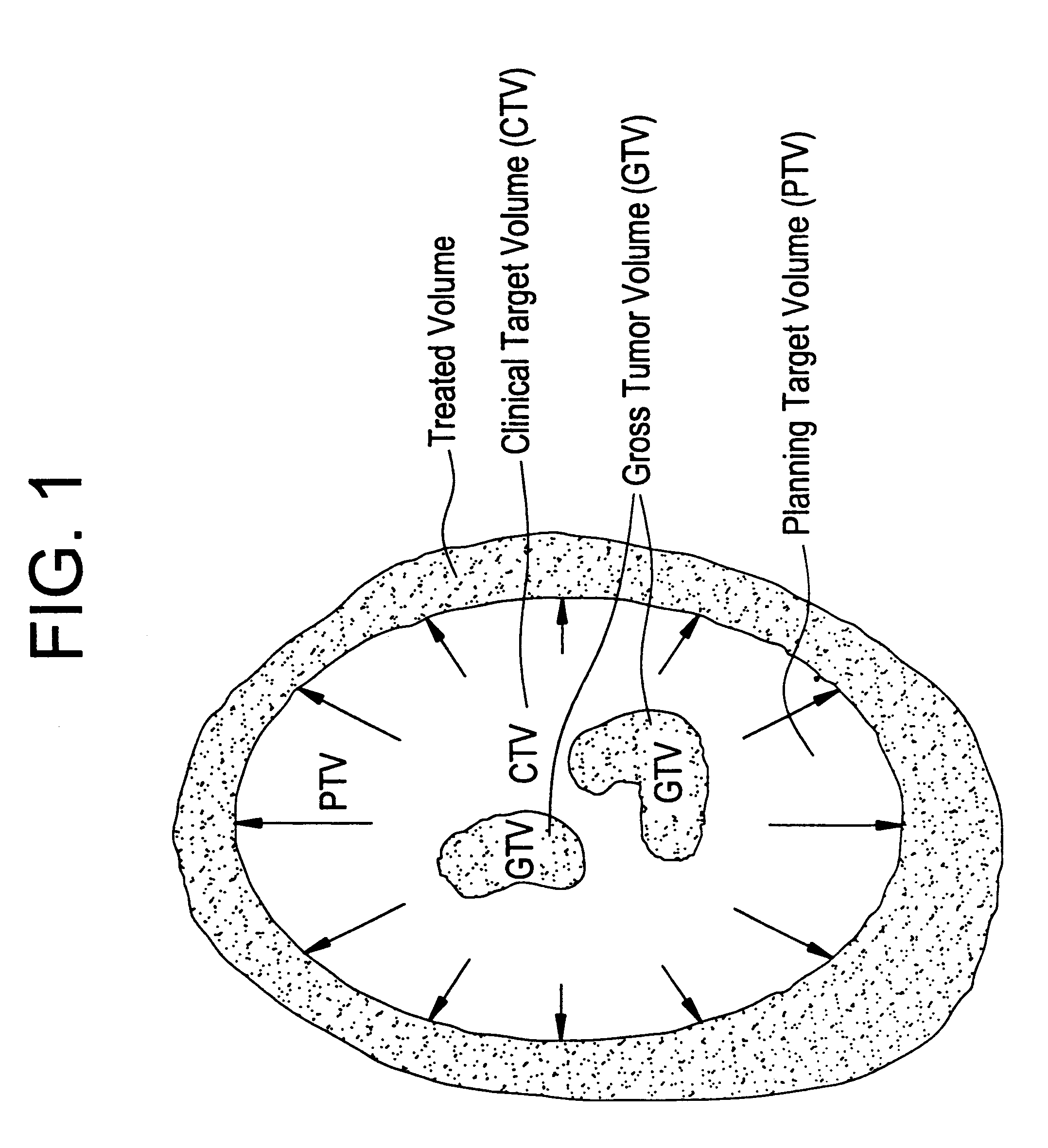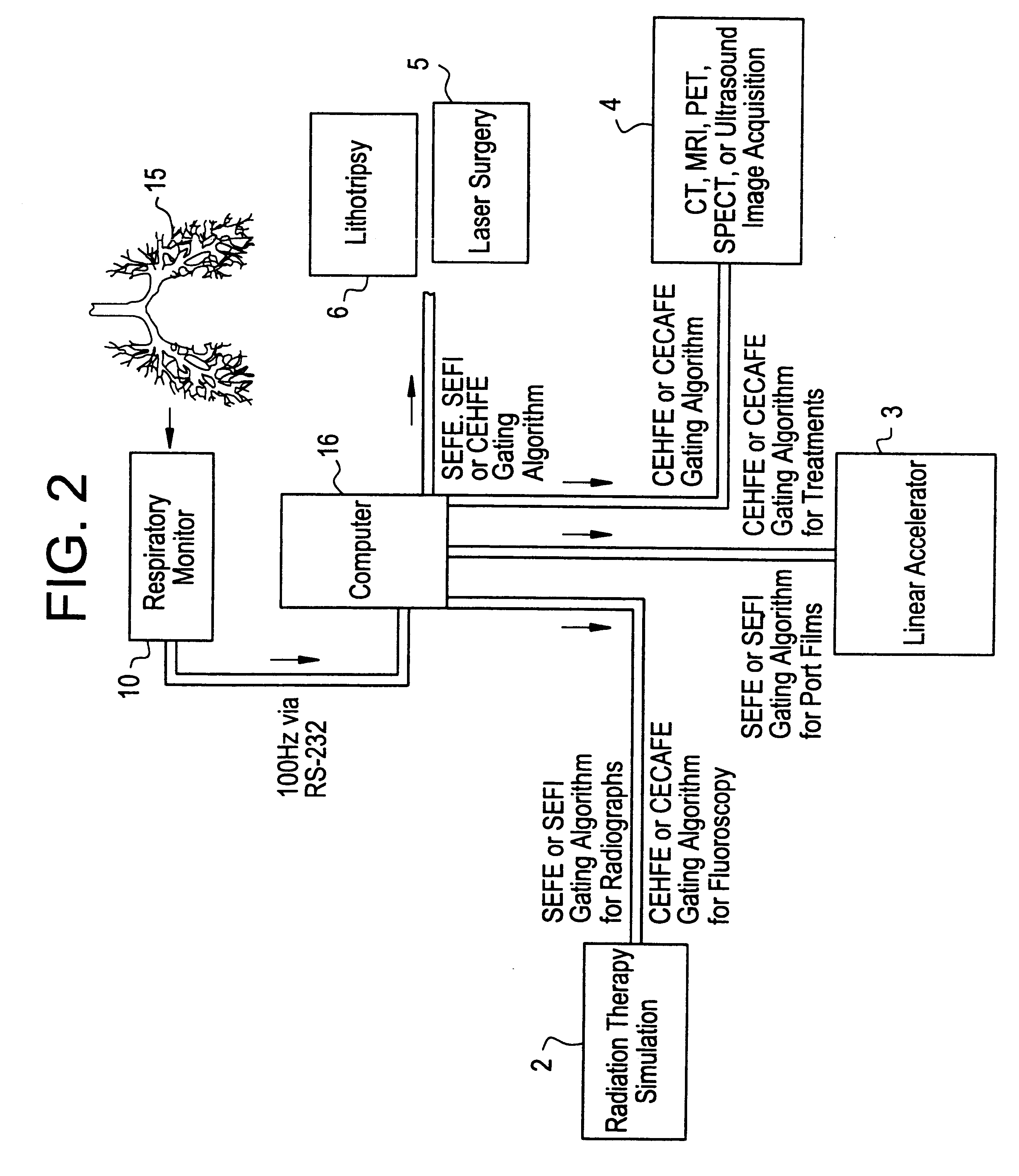Respiration responsive gating means and apparatus and methods using the same
a gating means and responsive technology, applied in the field of gating means responsive to gating, can solve the problems of image blurring, inapplicability to radiation therapy, and correction techniques such as navigator echo imaging work well, and achieve the effect of reducing inaccuracy
- Summary
- Abstract
- Description
- Claims
- Application Information
AI Technical Summary
Benefits of technology
Problems solved by technology
Method used
Image
Examples
Embodiment Construction
In FIG. 2, the generalized arrangement of a system operating in accordance with the invention is schematically illustrated. The respiratory input and output from the lungs of a patient 15 to be treated is connected to a respiratory monitor 10 which provides the data outputs of interest to a computer 16. Various medical devices can then be triggered ON and OFF in accordance with the needs of the examination or treatment, such as radiation therapy apparatus 2, linear accelerator 3, CT, MRI, PET, SPECT, or ultrasound image acquisition apparatus 4; laser surgery apparatus 5, or lithotripsy apparatus 6. Depending on the specific requirements of the examination or treatment, an appropriate algorithm is utilized, as illustrated, where the abbreviations shown respectively mean: SEFE=single exposure full exhalation, SEFI=single exposure full inhalation: CEHFE=continuous exposure hold at full exhalation; and CECAFE=continuous exposure centered about full exhalation.
Referring to FIG. 3 and 4, ...
PUM
 Login to View More
Login to View More Abstract
Description
Claims
Application Information
 Login to View More
Login to View More - R&D
- Intellectual Property
- Life Sciences
- Materials
- Tech Scout
- Unparalleled Data Quality
- Higher Quality Content
- 60% Fewer Hallucinations
Browse by: Latest US Patents, China's latest patents, Technical Efficacy Thesaurus, Application Domain, Technology Topic, Popular Technical Reports.
© 2025 PatSnap. All rights reserved.Legal|Privacy policy|Modern Slavery Act Transparency Statement|Sitemap|About US| Contact US: help@patsnap.com



